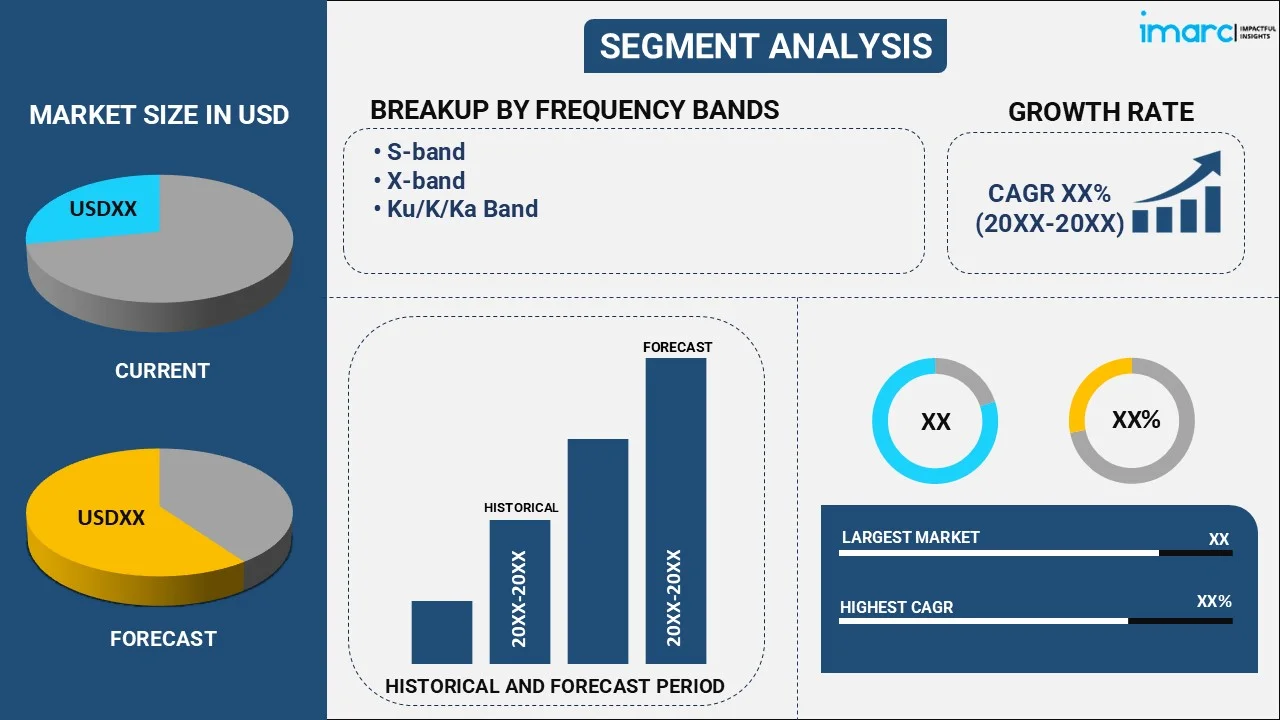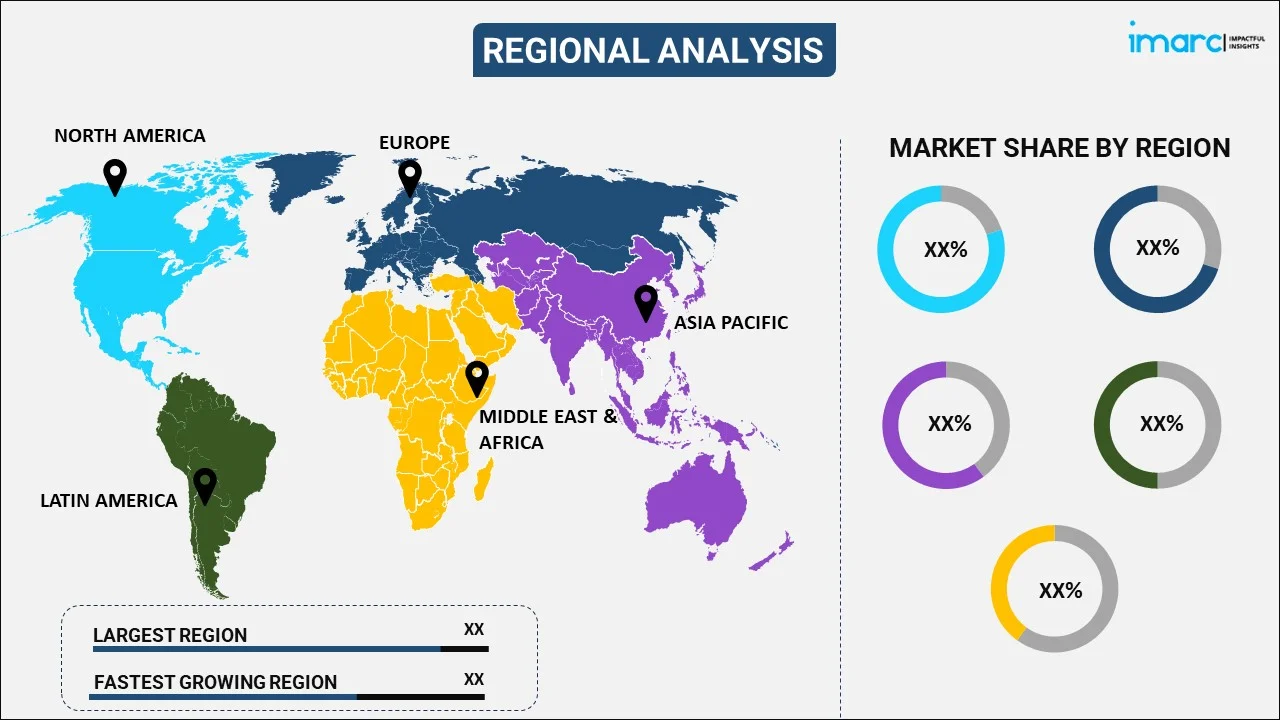
Airborne Fire Control Radar Market Report by Frequency Band (S-band, X-band, Ku/K/Ka Band), Application (Air to Ground, Air to Sea, Air to Air), End User (Military, Commercial), and Region 2025-2033
Market Overview:
The global airborne fire control radar market size reached USD 3.2 Billion in 2024. Looking forward, IMARC Group expects the market to reach USD 4.5 Billion by 2033, exhibiting a growth rate (CAGR) of 3.7% during 2025-2033.
|
Report Attribute
|
Key Statistics
|
|---|---|
|
Base Year
|
2024
|
|
Forecast Years
|
2025-2033
|
|
Historical Years
|
2019-2024
|
|
Market Size in 2024
|
USD 3.2 Billion |
|
Market Forecast in 2033
|
USD 4.5 Billion |
| Market Growth Rate 2025-2033 | 3.7% |
Airborne fire control radars (AFCRs) refer to long-range detection systems that are used for intercepting, tracking and attacking hostile air-to-air and air-to-ground agile targets. They are lightweight and compact and are integrated with the missiles, guns and rockets in fast strike aircraft and helicopters. AFCRs consist of antennas and low-pulse repetition frequency (LPRF) systems to induce the doppler frequency for the detection of changes in the range of moving targets. The radars identify the location of the target and process the data to determine the trajectory and continuous position. AFCRs also aid in navigating around fixed or moving targets and generate warnings to prevent collisions of large aircraft. As a result, these radars are widely used for detection, search, surveillance, weapon guidance and navigation operations.
Airborne Fire Control Radar Market Trends:
The rapid modernization of target detection equipment is one of the key factors driving the growth of the market. Moreover, the widespread adoption of active electronically scanning arrays (AESA) in aircraft is providing a thrust to the market growth. With the rising incidence of cross-border disturbances and terrorist attacks, military and defense organizations are extensively utilizing AFCRs for accurate target detection and conducting critical missions. The radars offer in-flight synthetic aperture radar (SAR) images of targets for real-time detection of movement or elevation in the field. In line with this, the increasing procurement of fighter jets by the government of developing economies to enhance the aerial strength of defense forces is also contributing to the growth of the market. Additionally, the increasing demand for advanced electro-optical systems in helicopters for improved combat capacities is acting as another growth factor. These systems are also integrated with advanced geolocation sensors, long-range battle damage assessment and surveillance and reconnaissance systems. Other factors, including the increasing automation in security and surveillance radar systems technology, along with significant improvements in the defense infrastructure, are anticipated to drive the market toward growth.
Key Market Segmentation:
IMARC Group provides an analysis of the key trends in each sub-segment of the global airborne fire control radar market report, along with forecasts at the global, regional and country level from 2025-2033. Our report has categorized the market based on frequency band, application and end user.
Breakup by Frequency Band:

- S-band
- X-band
- Ku/K/Ka Band
Breakup by Application:
- Air to Ground
- Air to Sea
- Air to Air
Breakup by End User:
- Military
- Commercial
Breakup by Region:

- North America
- United States
- Canada
- Asia-Pacific
- China
- Japan
- India
- South Korea
- Australia
- Indonesia
- Others
- Europe
- Germany
- France
- United Kingdom
- Italy
- Spain
- Russia
- Others
- Latin America
- Brazil
- Mexico
- Others
- Middle East and Africa
Competitive Landscape:
The report provides a comprehensive analysis of the competitive landscape in the global airborne fire control radar market with detailed profiles of all major companies, including:
- Aselsan A.S.
- BAE Systems
- General Dynamics Mission Systems, Inc.
- IAI
- Leonardo S.p.A.
- Lockheed Martin Corporation
- Northrop Grumman
- RTX Corporation
- Saab AB
Report Coverage:
| Report Features | Details |
|---|---|
| Base Year of the Analysis | 2024 |
| Historical Period | 2019-2024 |
| Forecast Period | 2025-2033 |
| Units | Billion USD |
| Segment Coverage | Frequency Band, Application, End User, Region |
| Region Covered | Asia Pacific, Europe, North America, Latin America, Middle East and Africa |
| Countries Covered | United States, Canada, Germany, France, United Kingdom, Italy, Spain, Russia, China, Japan, India, South Korea, Australia, Indonesia, Brazil, Mexico |
| Companies Covered | Aselsan A.S., BAE Systems, General Dynamics Mission Systems, Inc., IAI, Leonardo S.p.A., Lockheed Martin Corporation, Northrop Grumman, RTX Corporation, Saab AB, etc. |
| Customization Scope | 10% Free Customization |
| Post-Sale Analyst Support | 10-12 Weeks |
| Delivery Format | PDF and Excel through Email (We can also provide the editable version of the report in PPT/Word format on special request) |
Key Questions Answered in This Report
The global airborne fire control radar market was valued at USD 3.2 Billion in 2024.
We expect the global airborne fire control radar market to exhibit a CAGR of 3.7% during 2025-2033.
The emerging automation trends in security and surveillance radar systems technology, along with the growing usage of airborne fire control radar for accurate target detection and conducting critical missions, are primarily driving the global airborne fire control radar market.
The sudden outbreak of the COVID-19 pandemic had led to the implementation of stringent lockdown regulations across several nations resulting in temporary closure of numerous manufacturing units for airborne fire control radars.
Based on the frequency band, the global airborne fire control radar market has been segmented into S-band, X-band and Ku/K/Ka Band. Among these, S-band currently represents the largest market share.
Based on the application, the global airborne fire control radar market can be bifurcated into air to ground, air to sea and air to air. Currently, air to ground accounts for the majority of the total market share.
On a regional level, the market has been classified into North America, Europe, Asia-Pacific, Middle East and Africa and Latin America, where North America currently dominates the global market.
Some of the major players in the global airborne fire control radar market include Aselsan A.S., BAE Systems, General Dynamics Mission Systems, Inc., IAI, Leonardo S.p.A., Lockheed Martin Corporation, Northrop Grumman, RTX Corporation and Saab AB.
Need more help?
- Speak to our experienced analysts for insights on the current market scenarios.
- Include additional segments and countries to customize the report as per your requirement.
- Gain an unparalleled competitive advantage in your domain by understanding how to utilize the report and positively impacting your operations and revenue.
- For further assistance, please connect with our analysts.
 Request Customization
Request Customization
 Speak to an Analyst
Speak to an Analyst
 Request Brochure
Request Brochure
 Inquire Before Buying
Inquire Before Buying




.webp)




.webp)












